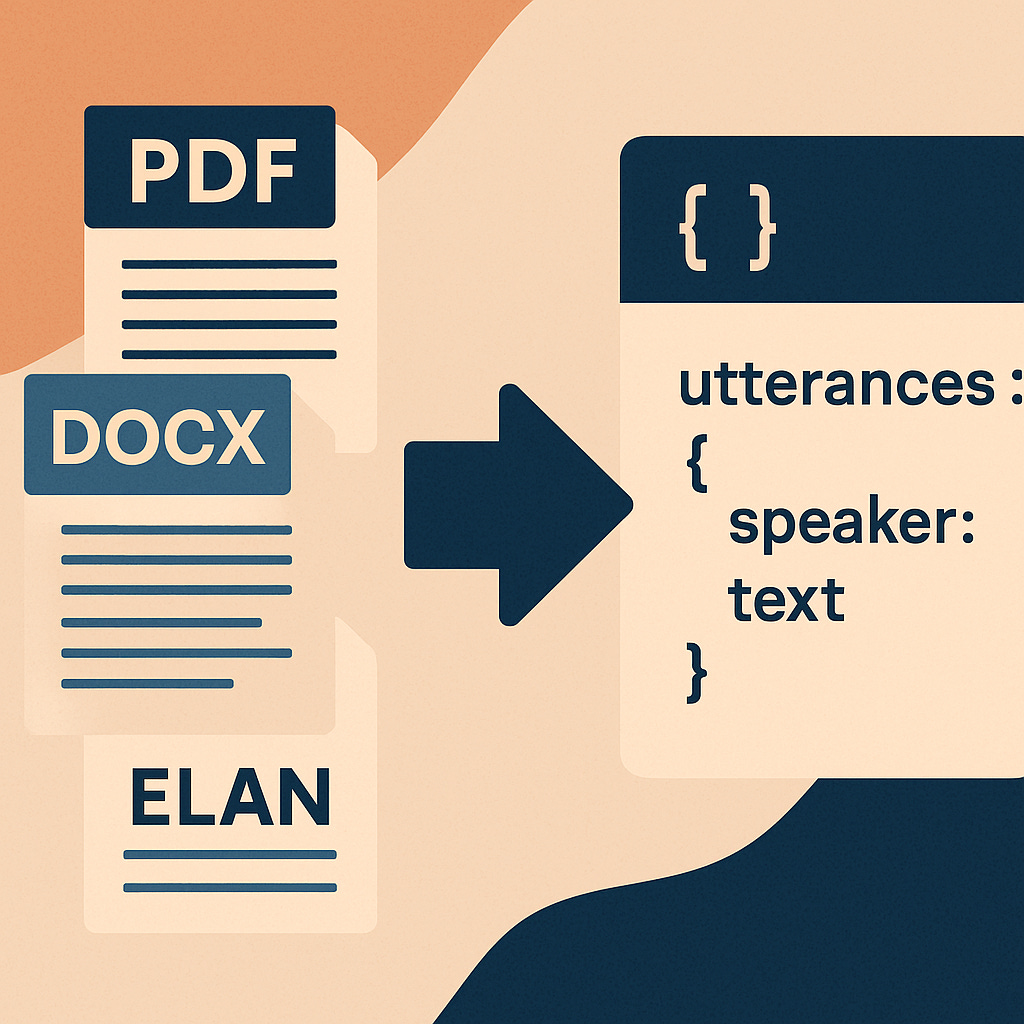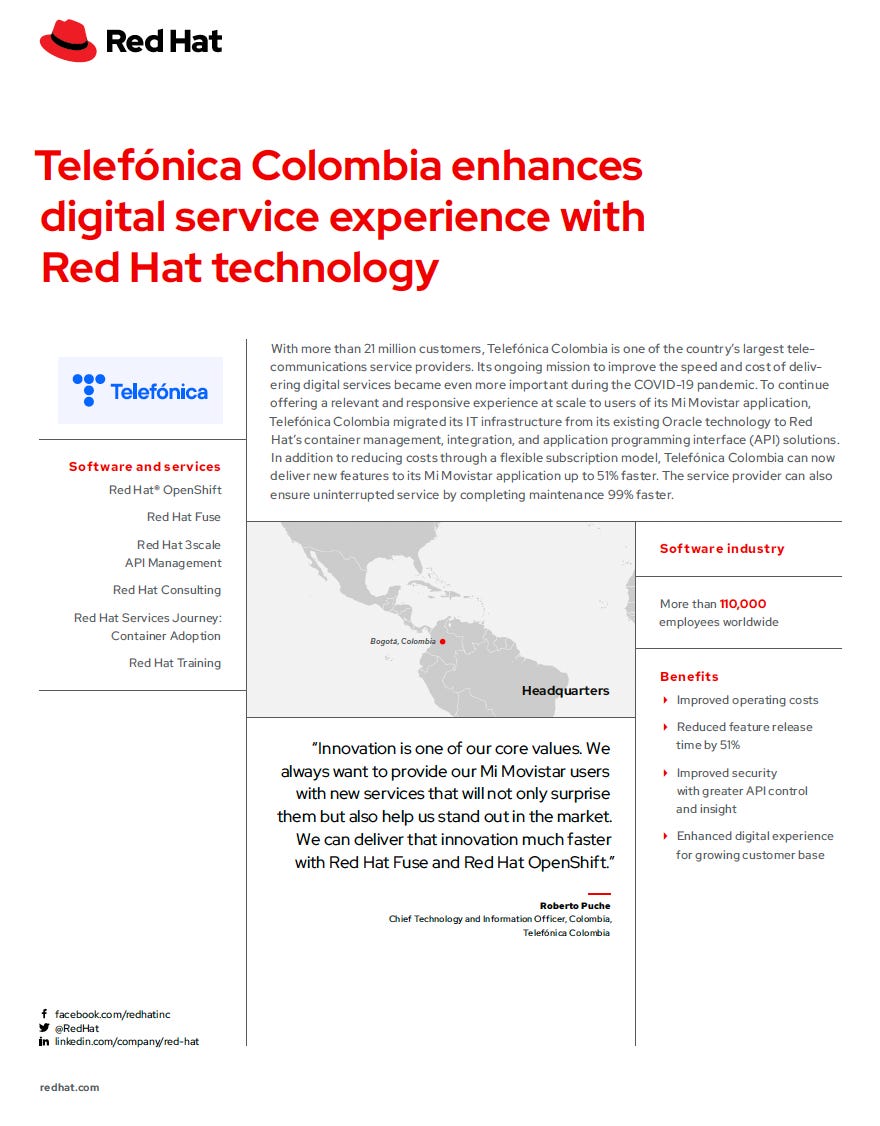Taming Unstructured Data: From PDFs to JSON with Quarkus and Docling
Build a fast, scalable converter to turn business documents into structured data using Quarkus and Docling—perfect for RAG pipelines, search indexing, and LLM prep.
Enterprise data rarely arrives in clean, structured formats. In the real world, valuable information is buried in PDFs, Word documents, ELAN files, transcribed field notes, or multilingual glossed text. If you’re building AI-infused applications: A chatbot that explains policy documents, a RAG pipeline that pulls context from user manuals, or a smart index for legal archives, you need a reliable, scalable way to convert these formats into structured, machine-consumable data.
In this hands-on tutorial, we’ll use Quarkus and the Docling extension to build a REST API that transforms unstructured documents into clean JSON, TSV, or XML formats. This data is ready for downstream use: embedding, chunking, vector search, or even linguistic analysis.
Docling and Docling Serve
The Docling Serve project is a lightweight server implementation for the Docling document transformation engine, designed to expose Docling’s powerful format conversion capabilities over a simple HTTP API. It acts as the backend service behind client libraries like the Quarkus Docling extension, enabling developers to convert complex linguistic, annotated, or unstructured document formats, such as ELAN (.eaf), Toolbox, DOCX, or PDF, into structured outputs like JSON, TSV, or XML. Docling Serve is ideal for embedding into NLP pipelines, AI backend services, or digital humanities tools where text segmentation, speaker identification, or gloss extraction are required. It runs as a stateless container and is optimized for easy integration and scalability.
Why This Problem Matters
Most enterprise AI projects don’t fail at the model layer. They fail in the messy middle: data preparation. Consider:
Business knowledge lives in PDFs. Contracts, datasheets, manuals, and policies are almost always stored as
.pdf.Word documents dominate collaboration. Internal playbooks, meeting notes, and feedback are often
.docx.Legacy and linguistic projects use ELAN, Toolbox, or FLEx. Parsing these formats reliably is non-trivial.
If you try to shove these formats directly into a vector DB or LLM pipeline, you’ll get garbage in, garbage out. You need semantic segmentation, metadata extraction, and structure preservation before anything else.
That’s what Docling offers. It understands structured annotations, interlinear glossed text, speaker metadata, and other linguistic features. It also handles common business formats like PDF and DOCX and emits clean, chunkable outputs.
Let’s build an application that wraps all of that in a fast Quarkus service.
Prerequisites
To follow along, make sure you have the following installed:
Java 17+
Maven
Podman (with a running Podman Machine)
An IDE (e.g., IntelliJ IDEA or VS Code)
No need to manually install Docling. Quarkus will take care of that for you when you start the dev service. The complete project is in my Github repository if you prefer to start from there.
Bootstrap Your Quarkus Project
mvn io.quarkus.platform:quarkus-maven-plugin:create \
-DprojectGroupId=com.ibm.developer \
-DprojectArtifactId=quarkus-docling-converter \
-Dextensions="rest-jackson,quarkus-docling"
cd quarkus-docling-converterThis sets up your project with the Docling extension and Jackson-based JSON support.
Implement the Core Docling Service
Currently, the quarkus-docling extension is a set of wrappers around the Docling Serve project, which exposes Docling as a REST API. It also provides a Dev Service and Dev UI integrations.
Create a class Docling.java in com.ibm.developer:
@ApplicationScoped
public class Docling {
@Inject
DoclingApi doclingApi;
public ConvertDocumentResponse convertFromUrl(URI uri, OutputFormat outputFormat) {
HttpSource source = new HttpSource();
source.setUrl(uri);
ConversionRequest request = new ConversionRequest()
.addHttpSourcesItem(source)
.options(new ConvertDocumentsOptions().toFormats(List.of(outputFormat)));
return doclingApi.processUrlV1alphaConvertSourcePost(request);
}
public ConvertDocumentResponse convertFromBytes(byte[] content, String filename, OutputFormat outputFormat) {
String base64 = Base64.getEncoder().encodeToString(content);
return convertFromBase64ToText(base64, filename, outputFormat);
}
public ConvertDocumentResponse convertFromBase64ToText(String base64, String filename, OutputFormat outputFormat) {
FileSource source = new FileSource()
.base64String(base64)
.filename(filename);
ConversionRequest request = new ConversionRequest()
.addFileSourcesItem(source)
.options(new ConvertDocumentsOptions().toFormats(List.of(outputFormat)));
return doclingApi.processUrlV1alphaConvertSourcePost(request);
}
}
This handles file uploads to the Docling service and remote URLs, converting any supported input format to structured output.
Create a REST Endpoint
Rename GreetingResource to ConverterResource.java and replace the content with:
@Path("/convert")
@Consumes(MediaType.MULTIPART_FORM_DATA)
@Produces(MediaType.TEXT_PLAIN)
public class ConverterResource {
@Inject
Docling docling;
String textContent = "";
@POST
public Response convert(@RestForm("file") FileUpload file) {
if (file == null) {
return Response.status(Response.Status.BAD_REQUEST)
.entity("Error: No file uploaded.").build();
}
try {
byte[] imageBytes = Files.readAllBytes(file.uploadedFile());
ConvertDocumentResponse result = docling.convertFromBytes(
imageBytes,
file.fileName(),
OutputFormat.TEXT);
this.textContent = result.getDocument().getTextContent();
} catch (java.io.IOException e) {
return Response.status(Response.Status.BAD_REQUEST)
.entity("Failed to read uploaded file: " + e.getMessage())
.build();
}
return Response.ok(textContent).build();
}
}File Upload: Accepts a file via multipart form data
Validation: Checks if file exists and has a valid MIME type
Conversion: Uses Docling service to convert the document bytes to text format
Response: Returns the extracted text
Try It Out
Grab a sample PDF that is simple enough for your local Docling runtime but complex enough to show some of the power of Docling. I just grabbed a random PDF from redhat.com as an example.
Now send this to the endpoint:
curl -F "file=@sample.pdf" \
-F "outputFormat=json" \
http://localhost:8080/convertAnd you will see the complete text output including base64 encoded images in the response.
Going Further
There’s a lot more that can be done. For now, I will leave you here to take this further with your own experimentations. Keep in mind that this is just the very beginning or a Docling integration with Quarkus and the eventual goal is to unify the DoclingDocument format with LangChain4j’s Document abstraction so that Docling can be used in a LangChain4j RAG pipeline for ingesting data.
What you could to today if you like:
Add a
/formatsendpoint to expose available input/output formatsSupport bulk conversion from ZIP files
Add integration with LangChain4j to process the output directly
Store converted chunks in a vector DB like Weaviate or pg-vector
With Docling and Quarkus, you now have a scalable, flexible foundation for turning unstructured documents into structured inputs for AI. Your models are only as good as the data they see: Make that data count.





Hi Markus, thanks for the great blog post! When I try to convert any document to JSON, I consistently get this error:
Caused by: com.fasterxml.jackson.databind.JsonMappingException: Numeric value (956461376471083675) out of range of int (-2147483648 - 2147483647)
at [Source: REDACTED (`StreamReadFeature.INCLUDE_SOURCE_IN_LOCATION` disabled); line: 1, column: 260] (through reference chain: io.quarkiverse.docling.runtime.client.model.ConvertDocumentResponse["document"]->io.quarkiverse.docling.runtime.client.model.DocumentResponse["json_content"]->io.quarkiverse.docling.runtime.client.model.DoclingDocument["origin"]->io.quarkiverse.docling.runtime.client.model.DocumentOrigin["binary_hash"])
DocumentOrigin.binaryHash is an Integer but the hash doesn't fit into Integer. Can we change the type of binaryHash to Long?
converting documents to JSON and other formats using the docling-ui (via quarkus dev-ui) works as expected.
I tried with jdk24 and get the following error.
curl -F "file=@sample.pdf" http://localhost:8080/convert
500 - Internal Server Error
---------------------------
Details:
Error id b3c5c84f-3826-487b-9a3e-08dd219d0910-3, org.jboss.resteasy.reactive.ClientWebApplicationException: Received: 'Not Found, status code 404' when invoking REST Client method: 'io.quarkiverse.docling.runtime.client.api.DoclingApi#processUrlV1alphaConvertSourcePost'
Stack:
org.jboss.resteasy.reactive.ClientWebApplicationException: Received: 'Not Found, status code 404' when invoking REST Client method: 'io.quarkiverse.docling.runtime.client.api.DoclingApi#processUrlV1alphaConvertSourcePost'
at org.jboss.resteasy.reactive.client.impl.RestClientRequestContext.unwrapException(RestClientRequestContext.java:205)
at org.jboss.resteasy.reactive.common.core.AbstractResteasyReactiveContext.handleException(AbstractResteasyReactiveContext.java:329)
at org.jboss.resteasy.reactive.common.core.AbstractResteasyReactiveContext.run(AbstractResteasyReactiveContext.java:175)
at io.smallrye.context.impl.wrappers.SlowContextualRunnable.run(SlowContextualRunnable.java:19)
at org.jboss.resteasy.reactive.client.handlers.ClientSwitchToRequestContextRestHandler$1$1.handle(ClientSwitchToRequestContextRestHandler.java:38)
at org.jboss.resteasy.reactive.client.handlers.ClientSwitchToRequestContextRestHandler$1$1.handle(ClientSwitchToRequestContextRestHandler.java:35)
at io.vertx.core.impl.ContextInternal.dispatch(ContextInternal.java:270)
at io.vertx.core.impl.ContextInternal.dispatch(ContextInternal.java:252)
at io.vertx.core.impl.ContextInternal.lambda$runOnContext$0(ContextInternal.java:50)
at io.netty.util.concurrent.AbstractEventExecutor.runTask(AbstractEventExecutor.java:173)
at io.netty.util.concurrent.AbstractEventExecutor.safeExecute(AbstractEventExecutor.java:166)
at io.netty.util.concurrent.SingleThreadEventExecutor.runAllTasks(SingleThreadEventExecutor.java:472)
at io.netty.channel.nio.NioEventLoop.run(NioEventLoop.java:566)
at io.netty.util.concurrent.SingleThreadEventExecutor$4.run(SingleThreadEventExecutor.java:998)
at io.netty.util.internal.ThreadExecutorMap$2.run(ThreadExecutorMap.java:74)
at io.netty.util.concurrent.FastThreadLocalRunnable.run(FastThreadLocalRunnable.java:30)
at java.base/java.lang.Thread.run(Thread.java:1447)
Caused by: jakarta.ws.rs.WebApplicationException: Not Found, status code 404
at io.quarkus.rest.client.reactive.runtime.DefaultMicroprofileRestClientExceptionMapper.toThrowable(DefaultMicroprofileRestClientExceptionMapper.java:19)
at io.quarkus.rest.client.reactive.runtime.MicroProfileRestClientResponseFilter.filter(MicroProfileRestClientResponseFilter.java:54)
at org.jboss.resteasy.reactive.client.handlers.ClientResponseFilterRestHandler.handle(ClientResponseFilterRestHandler.java:21)
at org.jboss.resteasy.reactive.client.handlers.ClientResponseFilterRestHandler.handle(ClientResponseFilterRestHandler.java:10)
at org.jboss.resteasy.reactive.common.core.AbstractResteasyReactiveContext.invokeHandler(AbstractResteasyReactiveContext.java:231)
at org.jboss.resteasy.reactive.common.core.AbstractResteasyReactiveContext.run(AbstractResteasyReactiveContext.java:147)
... 14 more